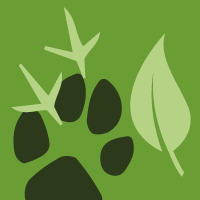Topic Menu
► Topic MenuTopic Editors



Challenges of Animal Science Diversity in Times of Climate and Technological Change
Topic Information
Dear Colleagues,
The coexistence of humans and animals is deeply ingrained in today’s society because domestication was a hugely influential process that shaped the development and growth of human civilization. Today, the sustainability of modern animal production is strongly influenced by climatic and technological changes. This Special Issue is dedicated to diversity as an important biological and philosophical aspect of sustainable animal production, focusing on the importance of diversity in the face of climatic and technological change. Therefore, this issue calls for contributions that provide information on the genomic aspects of diversity in native livestock breeds, especially those that are threatened by extinction but have potential utility. Theoretical or/and empirical work addressing the estimation or management of genetic diversity, a key component in breeders' genetic improvement , is needed, as even the most productive breeds, such as Holstein cattle, have experienced a decline in diversity. Microorganism diversity is crucial in agriculture because our livestock (hosts) are holobionts, along with various symbiotic microbes and viruses. In addition, almost all animal products (cheese, butter, sausage, etc.) are highly dependent on the presence and growth of various microorganisms. Ultimately, animal production is deeply connected with the diversity of its plant components (pastures and forage crops). Thus, the diversity of the production environment, as an important component of sustainable animal production, cannot be ignored. Farming systems, including animal nutrition and feeding, contribute significantly to the interaction between genotype and phenotype; therefore, papers addressing such issues are encouraged.
Prof. Dr. Vlatka Cubric-Curik
Dr. Nina Moravčíková
Prof. Dr. Luboš Vostrý
Topic Editors
Keywords
- animal breeding and diversity
- native breeds
- sustainable animal production
- genotype and fenotype interactions
- farming systems
Participating Journals
| Journal Name | Impact Factor | CiteScore | Launched Year | First Decision (median) | APC |
|---|---|---|---|---|---|

Animals
|
2.7 | 4.9 | 2011 | 16.1 Days | CHF 2400 |

Diversity
|
2.1 | 3.4 | 2009 | 15.4 Days | CHF 2100 |

Genes
|
2.8 | 5.2 | 2010 | 16.3 Days | CHF 2600 |

Journal of Zoological and Botanical Gardens
|
2.1 | 3.0 | 2020 | 21.4 Days | CHF 1000 |

Life
|
3.2 | 4.3 | 2011 | 18 Days | CHF 2600 |

MDPI Topics is cooperating with Preprints.org and has built a direct connection between MDPI journals and Preprints.org. Authors are encouraged to enjoy the benefits by posting a preprint at Preprints.org prior to publication:
- Immediately share your ideas ahead of publication and establish your research priority;
- Protect your idea from being stolen with this time-stamped preprint article;
- Enhance the exposure and impact of your research;
- Receive feedback from your peers in advance;
- Have it indexed in Web of Science (Preprint Citation Index), Google Scholar, Crossref, SHARE, PrePubMed, Scilit and Europe PMC.

